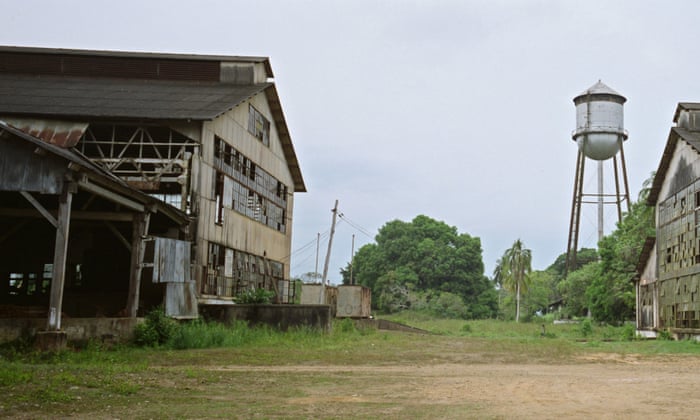Nestled deep within the Amazon Rainforest lies an enigmatic ghost town, an intriguing testament to the grand ambitions and ultimate failures of industrial giant Ford Motor Company. Fordlândia, as it came to be known, represents a unique and poignant chapter in the history of corporate expansion and utopian dreams. Today, it stands as a haunting reminder of how even the most audacious ventures can succumb to the forces of nature and circumstance. In the early 20th century, Henry Ford, the pioneering American industrialist, had a vision that extended beyond the assembly line. Eager to secure a consistent and inexpensive source of rubber for his burgeoning automobile empire, Ford sought to create a self-sustaining rubber plantation. The idea was to reduce his reliance on foreign rubber suppliers and establish an independent, vertically integrated production process.

In 1927, Ford acquired a vast expanse of land in the heart of the Brazilian Amazon, an area renowned for its rubber-producing potential. He christened this venture “Fordlândia” and set out to transform this remote piece of the Amazon into a thriving industrial town. Ford envisioned Fordlândia as more than just a rubber plantation; he wanted it to be a fully self-contained community that would incorporate American values, technology, and industry. The plan included American-style houses, hospitals, schools, and even an 18-hole golf course. The project was meant to be a utopian society, a self-sustaining oasis in the heart of the jungle.
However, the realities of the Amazon rainforest proved far more challenging than Ford’s grand vision. The climate was harsh, disease was rampant, and the rubber trees imported from Southeast Asia struggled to thrive in their new environment. The workers, mostly local Brazilians, were not accustomed to Ford’s strict American lifestyle, and labor disputes were frequent. Malaria and other diseases took a heavy toll on the population, and the loss of rubber trees further jeopardized the project’s viability. The community, which had been envisioned as a model of efficiency and order, was fraught with problems, including cultural clashes, poor working conditions, and discontent among the workers. In 1945, after nearly two decades of struggle, Ford Motor Company eventually sold Fordlândia to the Brazilian government. The grand experiment was over.

Today, Fordlândia stands as a haunting ghost town, with the crumbling remnants of its once grand American-style buildings being slowly reclaimed by the relentless Amazon jungle. The once-imposing golf course has been overgrown, and the rusting hulks of abandoned machinery and vehicles serve as eerie reminders of a dream gone awry. While the Fordlândia experiment was ultimately a failure, it serves as a unique historical relic, reflecting the intersection of industrial ambition, colonialism, and the indomitable power of the Amazon rainforest. It’s also a cautionary tale about the limits of human intervention in the natural world and the importance of understanding and respecting the ecosystems we seek to harness.
/posttv-thumbnails-prod.s3.amazonaws.com/07-26-2023/t_1539ac727ea6415f954cee8125af55b5_name_TB_1.jpg)
Fordlândia, Brazil, represents a fascinating yet sobering chapter in the history of industrial ventures. It’s a place where dreams of utopian communities and self-sustaining industrial empires collided with the realities of the Amazon rainforest. While Fordlândia may have succumbed to the forces of nature and human error, it endures as a symbol of ambition, perseverance, and the intricate dance between humans and their environment.
